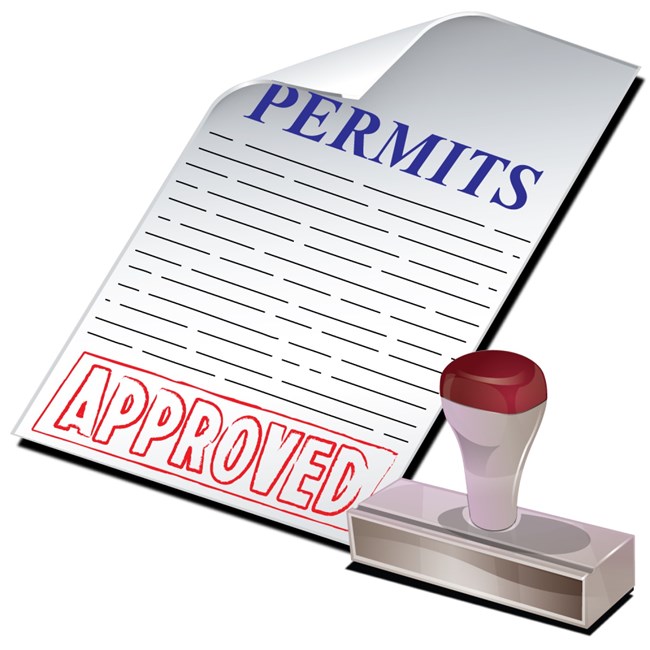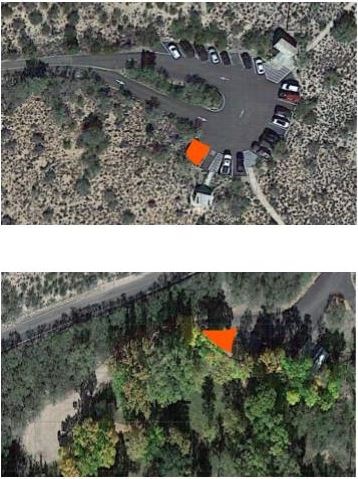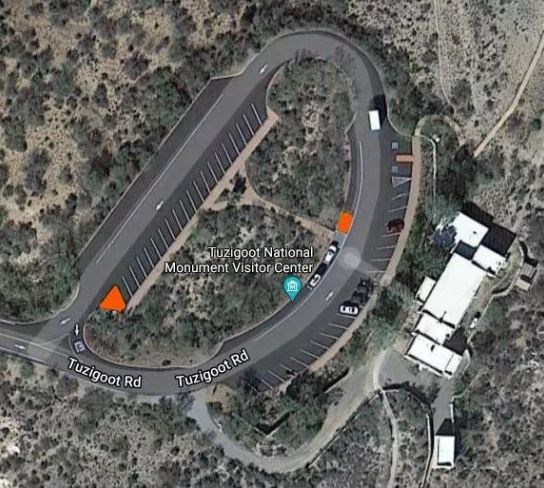
Wikicommons Introduction and Permit ProcessAll individuals or organizations considering to host a special event within park boundraies must obtain an approved Special Use Permit before holding the event. Most special events and activities held within the parks require a special use permit, issued only after the National Park Service determines that the activities involved will not impair park values and resources. Please note that there are usage limits for the number of people and vehicles for any special activity. Examples of events include: noncommercial or nonprofit groups leading trips or guided walks, weddings or any type of gatherings, racing events that utilize park roads or trails, musical events or concerts, etc. Special Use Permits Activities That Require A Special Use Permit The following is a compliation of those activities for which a permit from the Superintendent is required, subject to limitations imposed by National Park Service Director's Order 53 on Special Park Uses.
The following areas within Montezuma Castle and its detatched unit Montezuma Well are closed to special events:
Events involving over 20 participants on hiking trails, bike paths, carriage roads, and motor roads, such as walk-a-thons, running and bicycling events, and motorcycle rides. Filming and Still PhotographyUpdates to Commercial Filming Permits on Park LandEffective October 28, 2022, the National Park Service rescinded interim guidance that was in place during litigation regarding commercial filming and has returned to longstanding laws and regulations governing commercial filming in parks. Questions and answers about filming and photography are provided below. Those interested in commercial filming activities on land managed by the National Park Service should reall all the information below and are encouraged to contact us for more information about filming in the park and to discuss how to minimize potential impacts to visitors and sensitive park resources. What is Considered Commercial Filming?"Commercial filming" means the film, electronic, magnetic, digital, or other recording of a moving image by a person, business, or other entity for a market audience with the intent of generating income. Examples include, but are not limited to, feature film, videography, and documentaries. Commercial filming may include the advertisement of a product or service, or the use of actors, models, sets, or props. Do I need a permit to film?Under federal law, all commercial filming that occurs within a unit of the National Park System requires a permit. Does Non Commercial Filming Require a Permit?Individual parks may require a permit for non-commercial filming if necessary to manage the activity, to protect park resources and values, to preserve wilderness character, to minimize conflict between user groups, or to ensure public safety. Examples of non-commercial filming include, but are not limited to, filming for tourism bureaus, convention and visitor bureaus, and student filming. If you have questions about whether a non-commercial film project requires a permit, please contact the park where you intend to film in advance. Low-Impact Filming“Low-impact filming’ is defined as outdoor filming activities in areas open to the public, except areas managed as wilderness, involving five people or less and equipment that will be carried at all times, except for small tripods used to hold cameras. Those participating in low-impact filming activities do not need a permit and are not required to contact the park in advance. If low-impact filmers have questions about areas where they want to film, please contact the park directly. Videographers, filmers, producers, directors, news and other staff associated with filming are reminded that rules and regulations that apply to all park visitors, including park hours and closed areas, still apply to filming activities even if a permit is not required. Check with the park staff for more information on closures, sensitive resources, and other safety tips. Non-Low-Impact FilmingFilming activities that do not meet the description of low-impact filming require at least ten days advance notice to the National Park Service by contacting the park directly in writing. The park’s superintendent will determine whether the filming activities will require a special use permit for filming. Based on the information provided, a permit may be required to:
Examples of requests that may require a permit include, but are not limited to: entering a sensitive resource area, filming in areas that require tickets to enter, or filming in visitor centers, picnic areas, or other visitor areas. The decision to require a permit rests with the park superintendent based on potential impacts to park resources or the visitor experience. Contact the park directly if unsure whether or not a filming activity is considered low-impact or may require a permit. What Fees are Required with a Permit?In a addition to the standard entrace fees to the park must be paid where applicable, Federal law requires the National Park Service to recover its administrative costs for commercial filming and still photography activities that require a permit. Cost recovery includes an application fee and any additional charges to cover the costs incurred by the National Park Service in processing your request and monitoring the permitted activities. This amount will vary depending on the park and the size and complexity of the permitted activities. The application fee must be submitted with your application. In addition, Federal law also requires the National Park Service to collect a location fee that provides a fair return to the United States for the use of park lands for commercial filming and for still photography requires a permit. The National Park Service uses the following fee schedules for filming and photography: Commercial Filming
Still Photography
Permits issued for non-commercial filming may be subject to cost recovery charges, including an application fee, but a separate location fee will not be charged. Still PhotographyWhen is a permit needed?Still photographers require a permit only when:
What fees will I have to pay?The National Park Service will collect a cost recovery charge and a location fee for still photography permits. Cost recovery includes an application fee and any additional charges to cover the costs incurred by the National Park Service in processing your request and monitoring your permit. This amount will vary depending on the park and the size and complexity of your permit. The application fee must be submitted with your application. For any questions, please contact Montezuma Castle National Monument by email or at (928) 567-3322 x0Public assemblies and meetings are allowed by permit only in the following areas:
Persons participating in these public assemblies and meetings will not approach vehicles or inhibit the flow of pedestrian and/or vehicle traffic through the adjacent areas.
Not all of these sites may be available at any given time due to other scheduled or unscheduled park functions or events.
**NOTE: As of Oct. 5, 2010, 36 CFR §2.51(b) was added. This states that a small group, defined as 25 people or less, is not required to obtain a permit prior to exercising their First Amendment Rights to Free Speech. However, they are still required to use the designated areas, as described above and shown on the attached maps (Appendix A, B, and C), and obey all rules and regulations regarding public assemblies and meetings. Other 36 CFR sections affected by and pertinent to this change include 2.22-Property, 2.31-Trespassing, Tampering, and Vandalism, 2.32-Interfering with Agency Functions, and 2.34-Disorderly Conduct. Absent a permit, the running-at-large, herding, driving across, allowing on, pasturing or grazing of livestock of any kind in a park area for agricultural purposes is prohibited. Additionally, a permit can only be issued in the following circumstances:
The solicitation or demand for gifts, money, goods or services requires a permit under §2.50, §2.51, or §2.52 in the Superintendent Compendium, and is subject to the terms and conditions specified therein.
Sale or distribution of printed materials is allowed by permit only in designated areas. Vehicles may not be approached.
All scientific research involving cultural or natural resources conducted in the monuments must be associated with a research permit. Research permit requests are submitted through the Research Permit and Reporting System (RPRS), a web-based application. The RPRS allows park staff to efficiently review proposed research activities and track existing permitted projects. Additionally, RPRS provides researcher accountability by facilitating a peer review process and by requiring the submission of annual reports following the acceptance of permit applications. All potential research activities, including those proposed by individuals, private institutions and employees of the National Park Service are subject to the RPRS application and permit process. No research-based activities should occur on park lands without an approved RPRS permit. Additional information on the process can be found at: https://irma.nps.gov/RPRS/
First AmendmentFreedom of speech, press, religion, and assembly are rights protected by the First Amendment of the Constitution. People may exercise these rights in national parks, but the National Park Service (NPS) retains its responsibility to protect park resources and prevent conflict among park visitors. By law, the NPS has established places in the park where First Amendment activities can be accommodated. These areas are visible to the general visiting public without interfering with the public's enjoyment of the park.
Montezuma Castle First Amendment Locations:

Montezuma Well First Amendment Locations:

Tuzigoot First Amendment Locations:
|
Last updated: June 12, 2024
